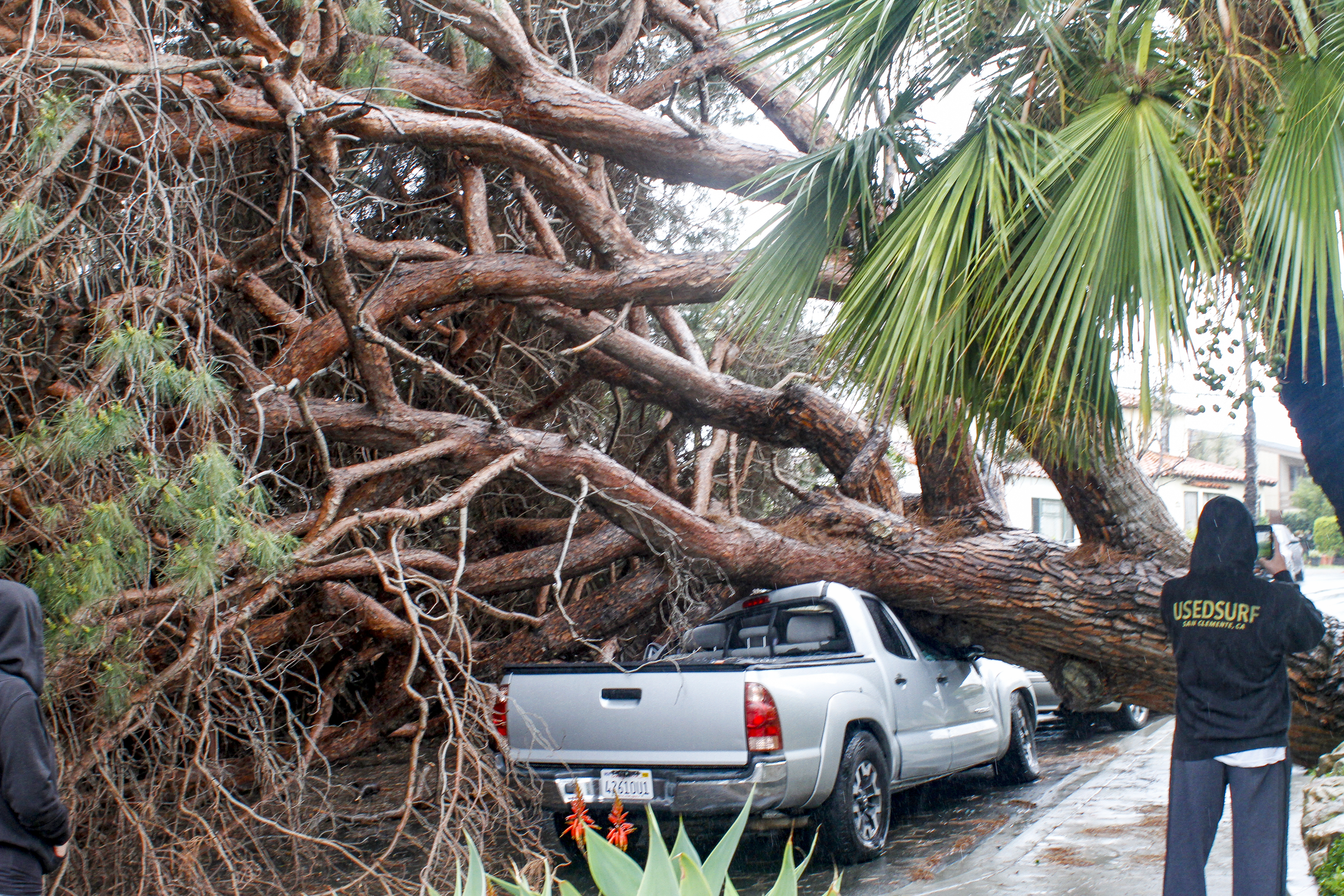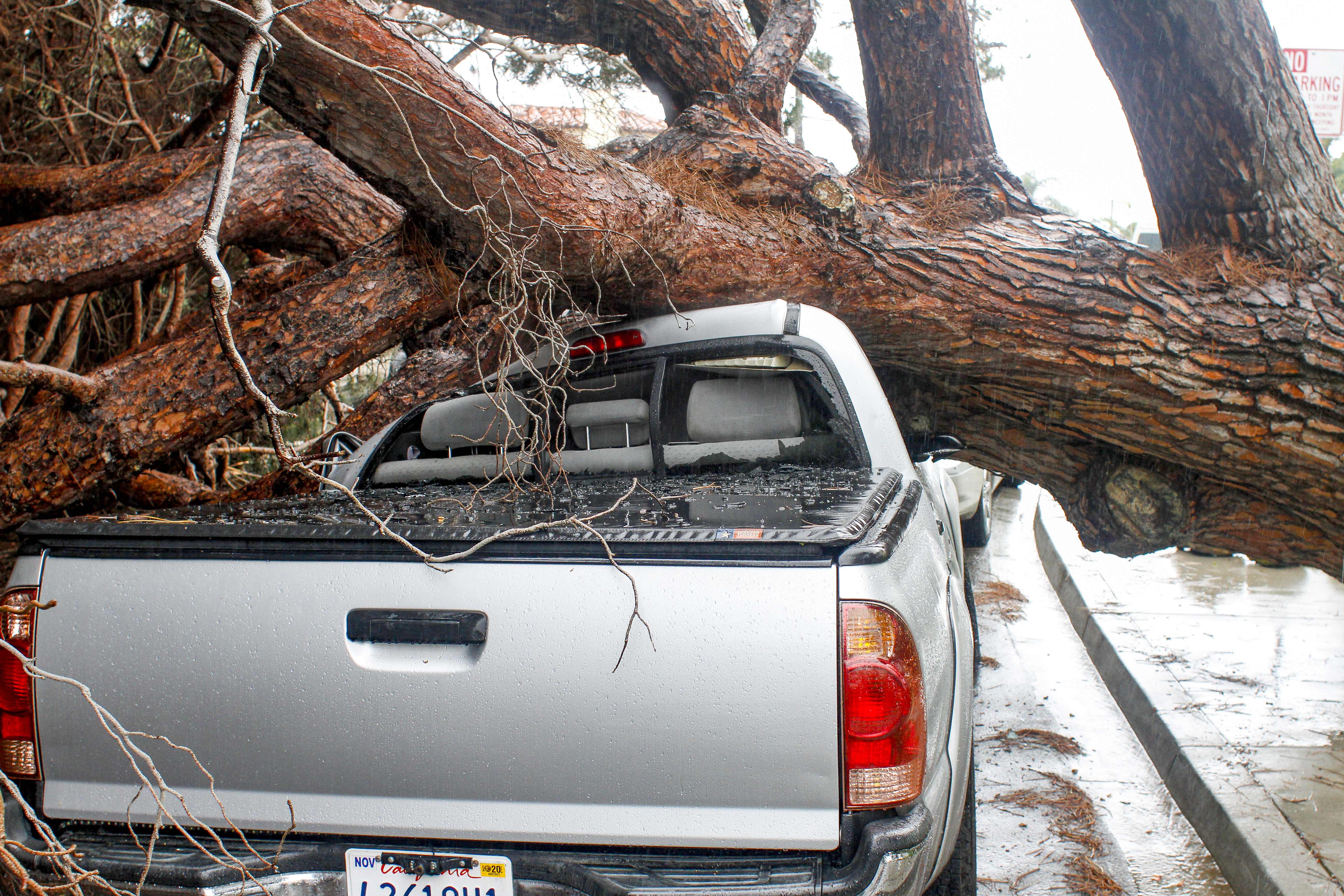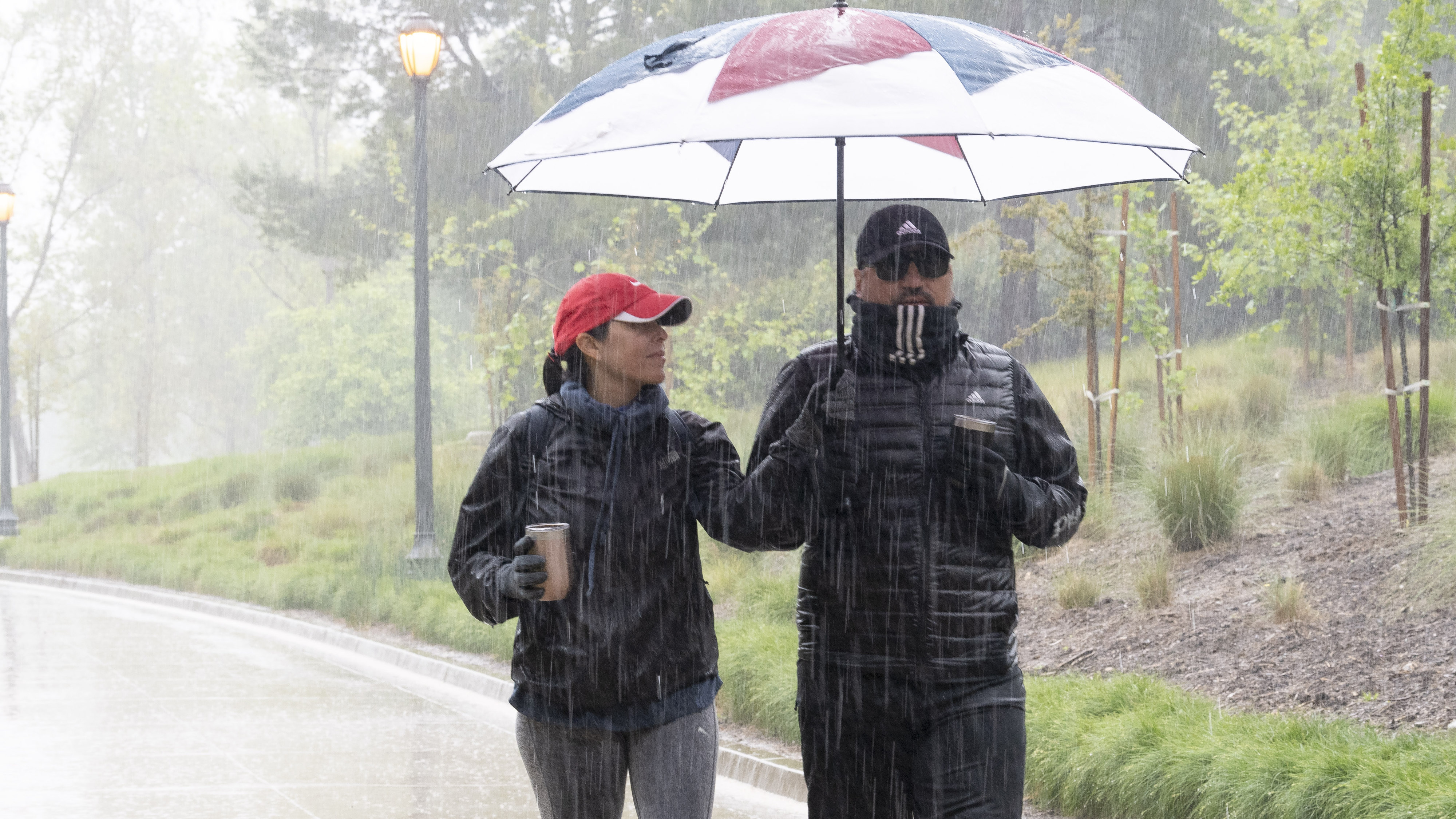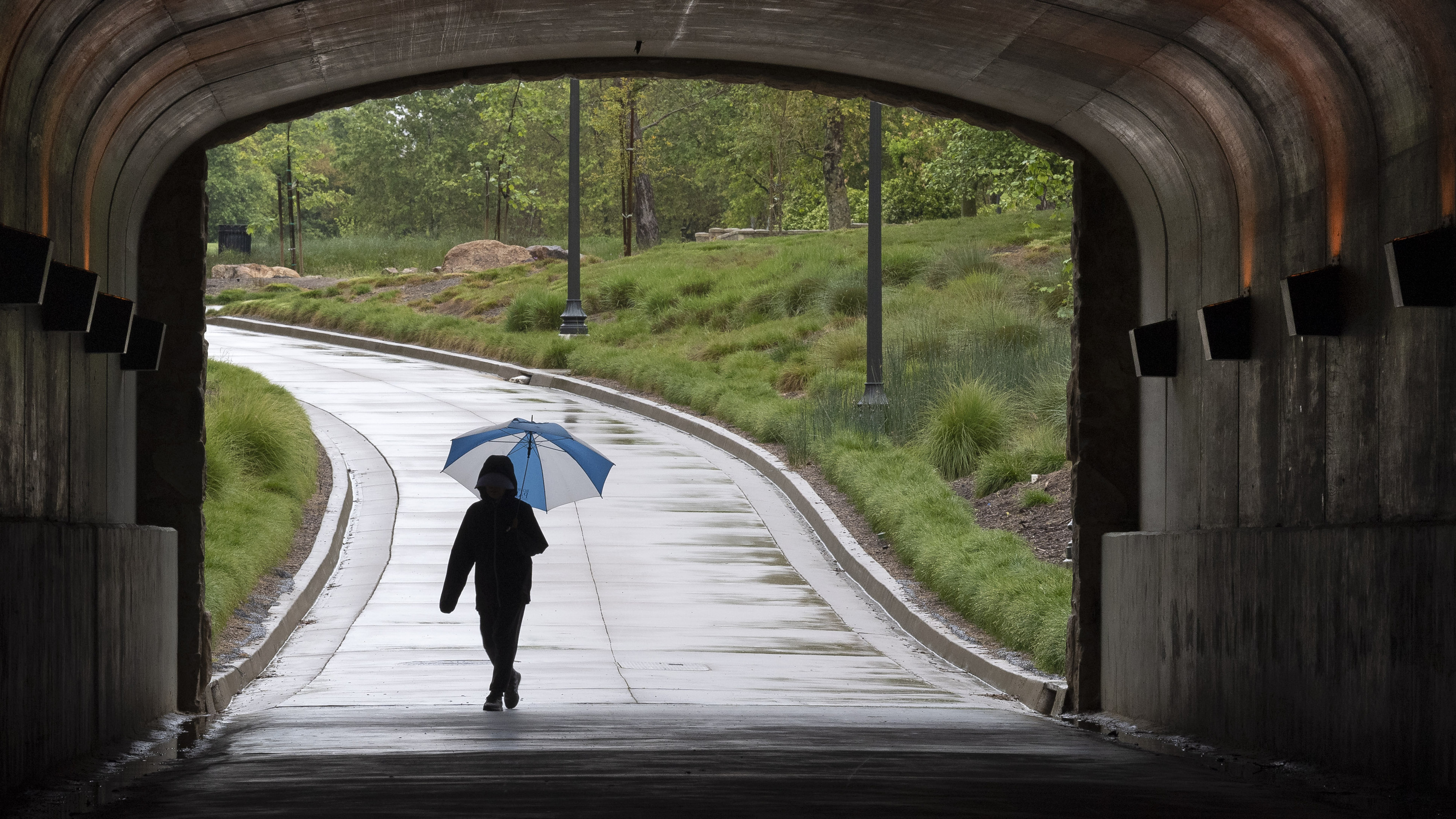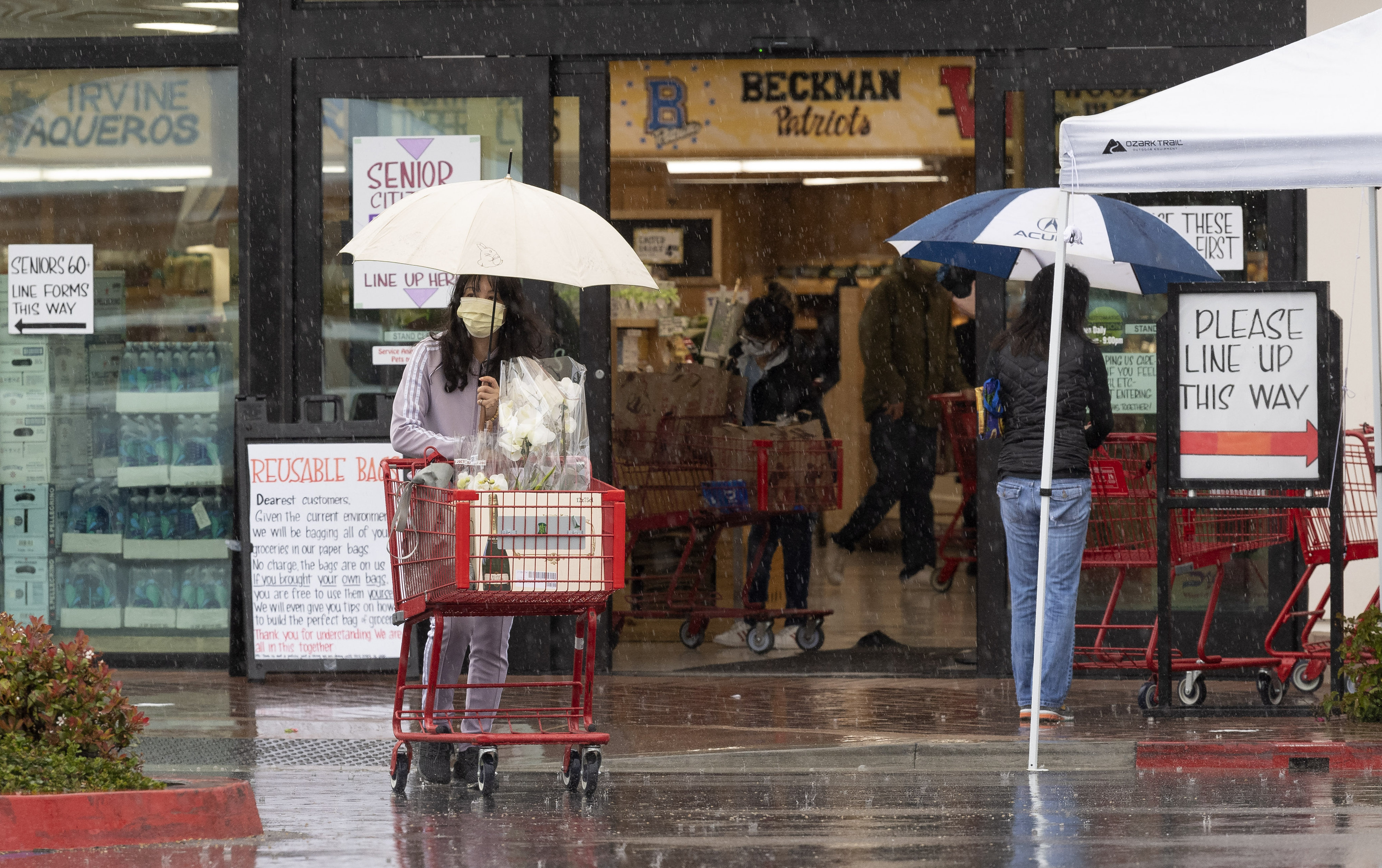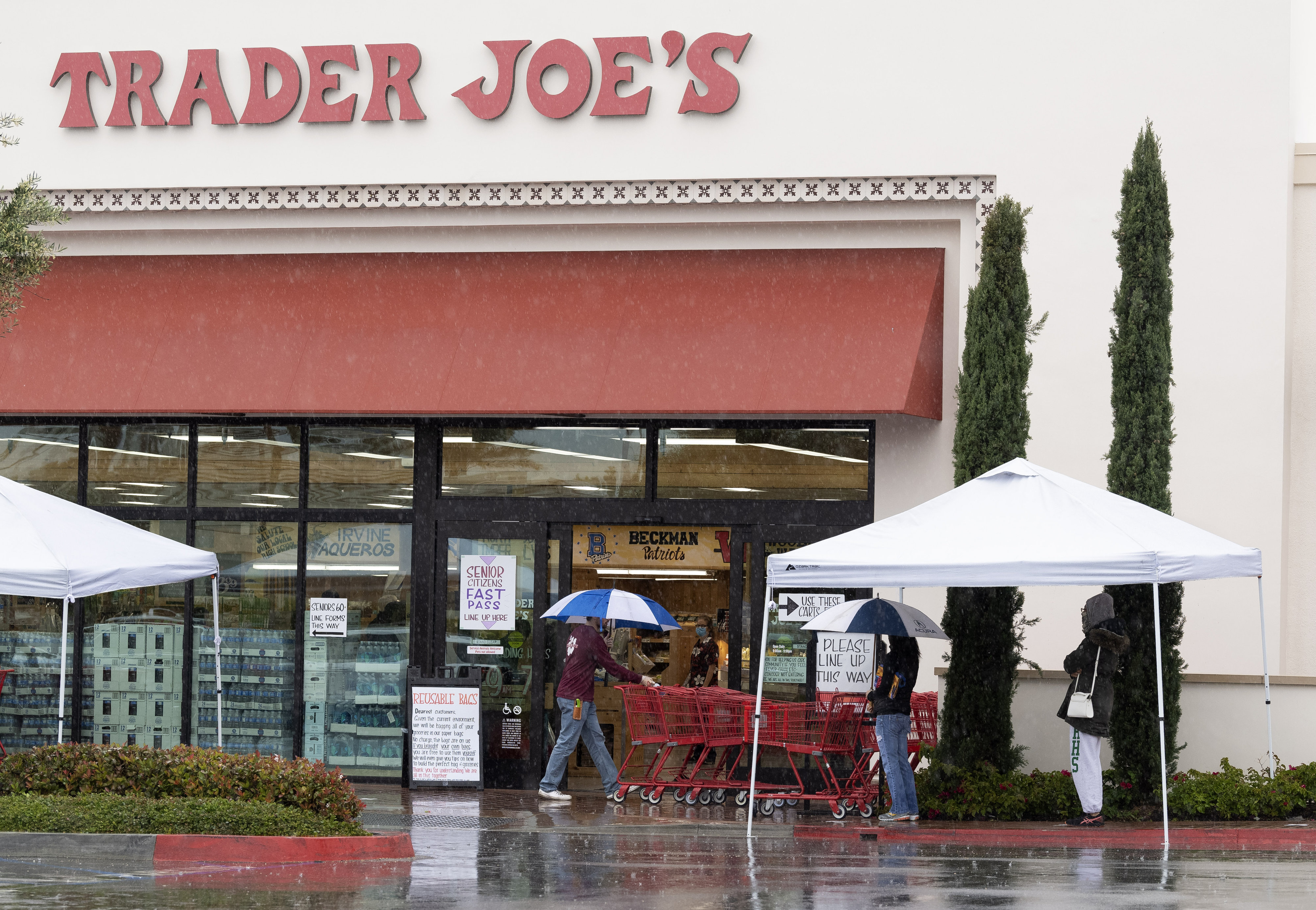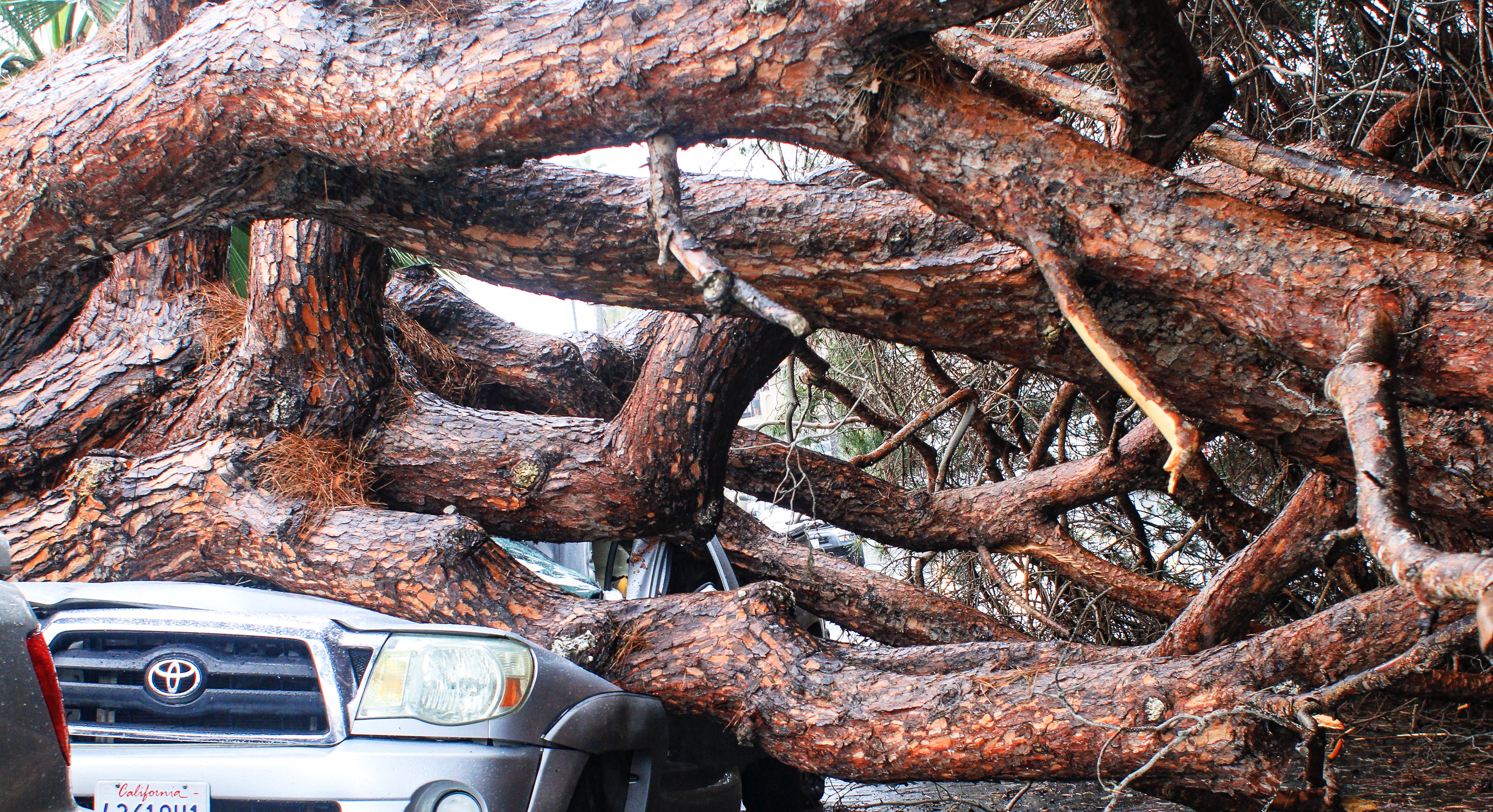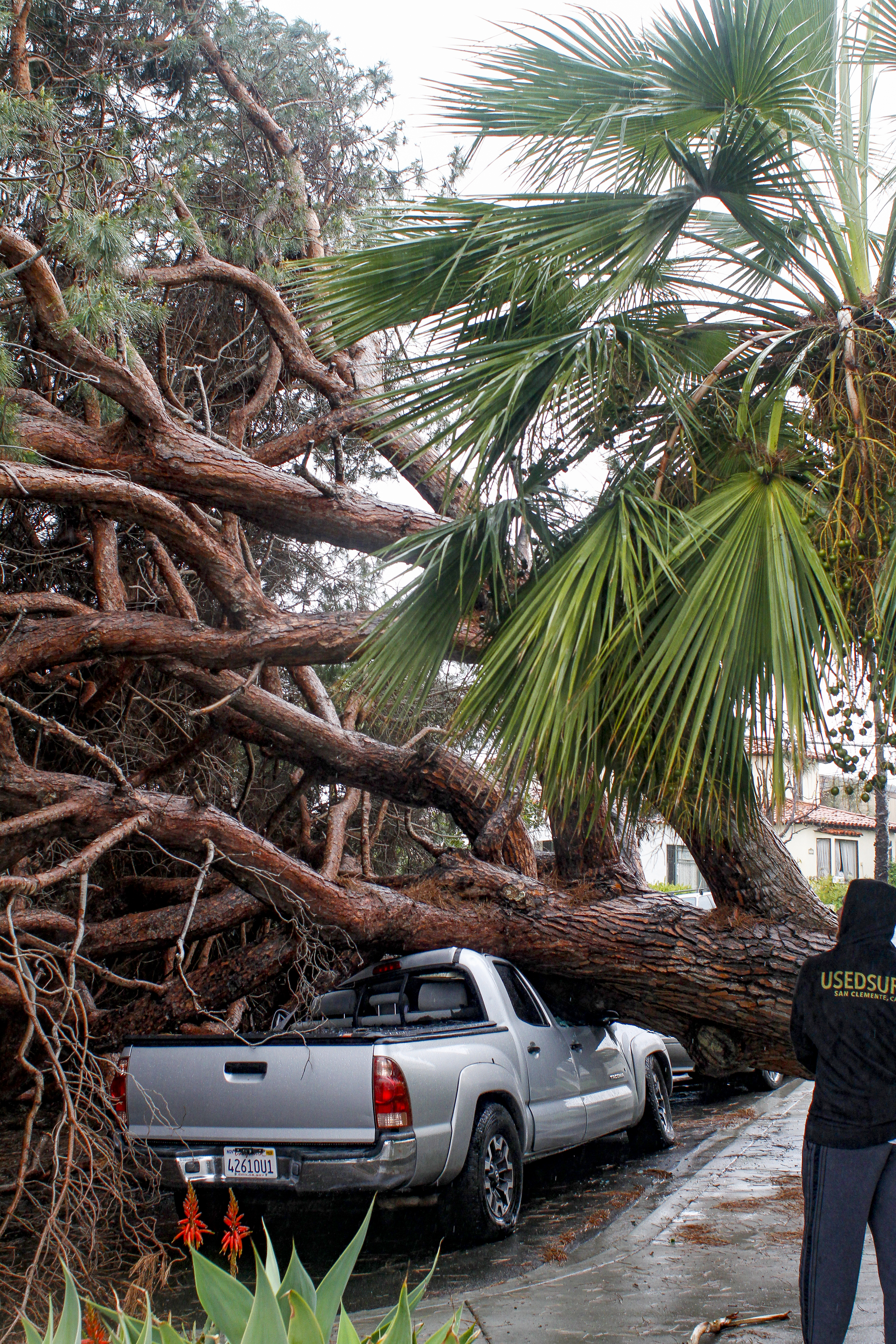April showers bring hazards across Southern California; rain likely to continue all week
A late-season storm brought a steady downpour Monday morning to Southern California, breaking records in some areas and creating a slew of hazards across the region.
In wildfire burn scars, residents were warned of possible evacuations if the rain triggered mud slides in areas such as neighborhoods northwest of Lake Elsinore, recently scarred by the 23,000-acre Holy fire.
Though no major mudslides were reported in burn areas as of early Monday afternoon, there was one in the Hollywood Hills. Los Angeles fire officials said that an approximately 50-foot section of hillside slid into the backyard of a home. None of the occupants were injured but it led to a street being closed.
There also were also swift water rescues. In Buena Park, a man in a flood control channel with water running up to 3 feet high was pulled out by firefighters after he managed to get to a dry spot in a storm drain. Later that morning in Long Beach, firefighters began their hours-long efforts to rescue a man who was stuck in a storm drain with water in it.
Though there was less traffic on roads due to coronavirus-related stay-at-home orders, there were still several minor and non-injury crash reported on freeways as the rain fell, according to the California Highway Patrol incident log. One crash in Riverside on the 91 freeway left the driver of a sedan trapped inside. The car spun out during the storm and ended up in an aqueduct before being pulled out by firefighters.
Accompanying the rain were winds, some of them gusting up to 45 and 55 miles per hour. Most of the gusts in Orange County were recorded between 8 a.m. and 11 a.m. said National Weather Service meteorologist Mark Moede. At the San Clemente Pier, a 40 mile per hour gust was recorded and one in Laguna Beach reached 34 miles per hour. Not far away the gusts managed to topple a 30-foot tree in Mission Viejo, which the Orange County Sheriff’s Department reported had blocked a traffic lane.
View this post on Instagram
The roadway has been cleared. A tree about 30 feet tall fell due to the wind and rain. The northbound traffic on Los Alisos (south of Entidad) will be impacted due to the #2 lane being blocked. The city has maintenance crews responding. Please use alternate routes until approximately 2:30 p.m. to avoid delay.
By noon Monday the downpour had already broken some records. Downtown Los Angeles recorded 1.10 inches, topping its past high for the date of 0.84 from 1958, according to the National Weather Service. Rainfall totals of 1.22 inches in El Segundo, 0.96 inches in Burbank and 0.39 inches in Lancaster also set records for Monday’s date.
Some of the heaviest rain at the start of the work week came down in the Angeles National Forest, north of Pasadena and Azusa. NWS monitoring stations at Camp Hi Hill measured 5.94 and 4.84 inches of rain at Camp Hi Hill and the Cogswell Dam, respectively. The storm also dumped 4.98 inches of precipitation on the Lytle Creek RAWS (remote automated weather station), along the Cajon Pass; and 3.89 inches of rain on Mt. Baldy Village.
Several new daily rainfall records set today:
> Burbank 0.96″ (old record 0.85″/1986)
> DWTN LA 1.10″ (0.84″/1958)
> LAX 1.22″ (0.87″/1984)
> Palmdale 0.36″ (0.21″/1958)
> Lancaster 0.39″ (0.34″/1978)
These #s could rise tonight due to area showers.#CAwx #CAstorm #LArain
— NWS Los Angeles (@NWSLosAngeles) April 7, 2020
Though the coming days are expected to have rain, they won’t be as strong as Monday, Moede, of the National Weather Service said.
“It’s just a very slow, stagnant pattern of rain throughout the next couple days,” he said. “It will rain, then there’ll be some sun..”
There is also a chance of thunderstorms, forecasters said. The early April storm is not typical of this time of the year, Moede said.
“Typically when we get through March things get a little quieter…rainfall decreases,” he said. But that isn’t the case so yet.
In mountainous areas a winter storm warning is in effect until Thursday. Snow levels are expected to be at 5,500 feet on Tuesday. Big Bear Lake is expected to get between 2 and 4 feet of snow by Thursday.
Temperatures are also lower than they are on average. The rest of the week we can expect temperatures to dip to the 60s during the day in most areas, several degrees below what’s typical in April which often records temperatures in the low 70s.
“The weather pattern that we’ve seen in this winter essentially hasn’t changed in this point of the season,” Moede said.
Staff writer Eric Licas and City News Service contributed to this report.









